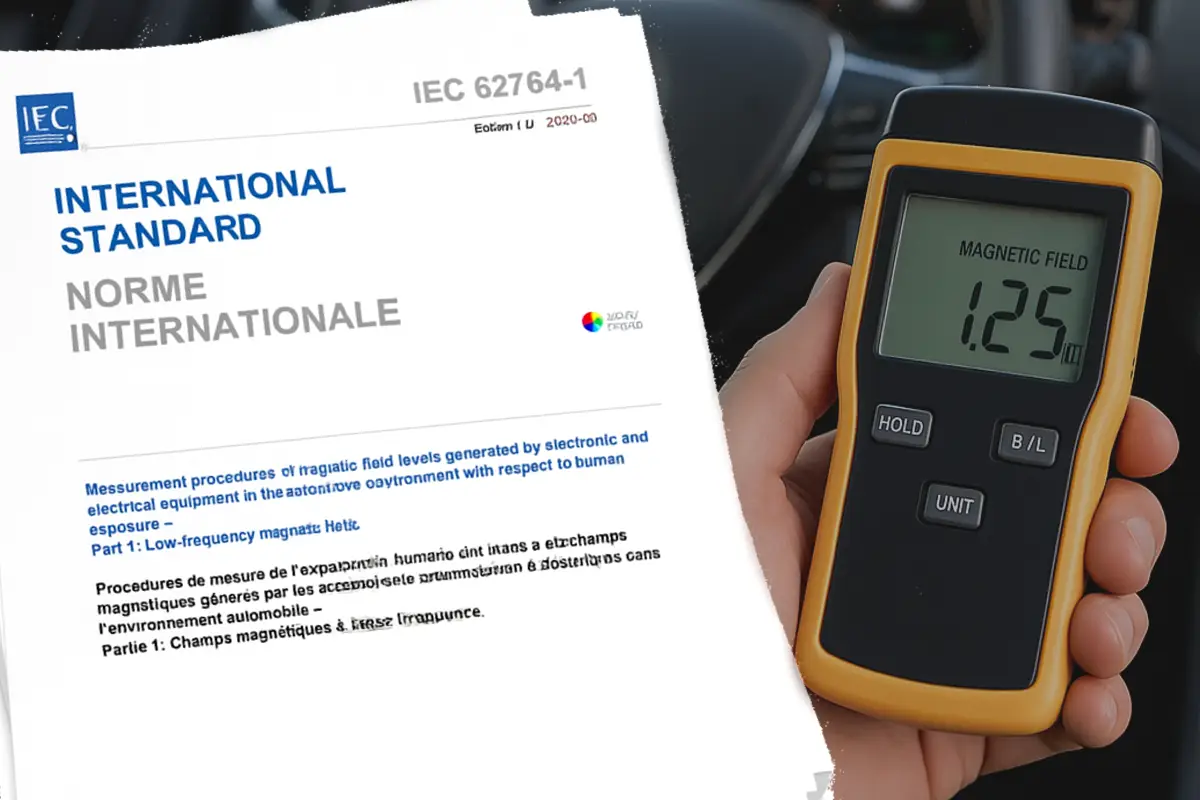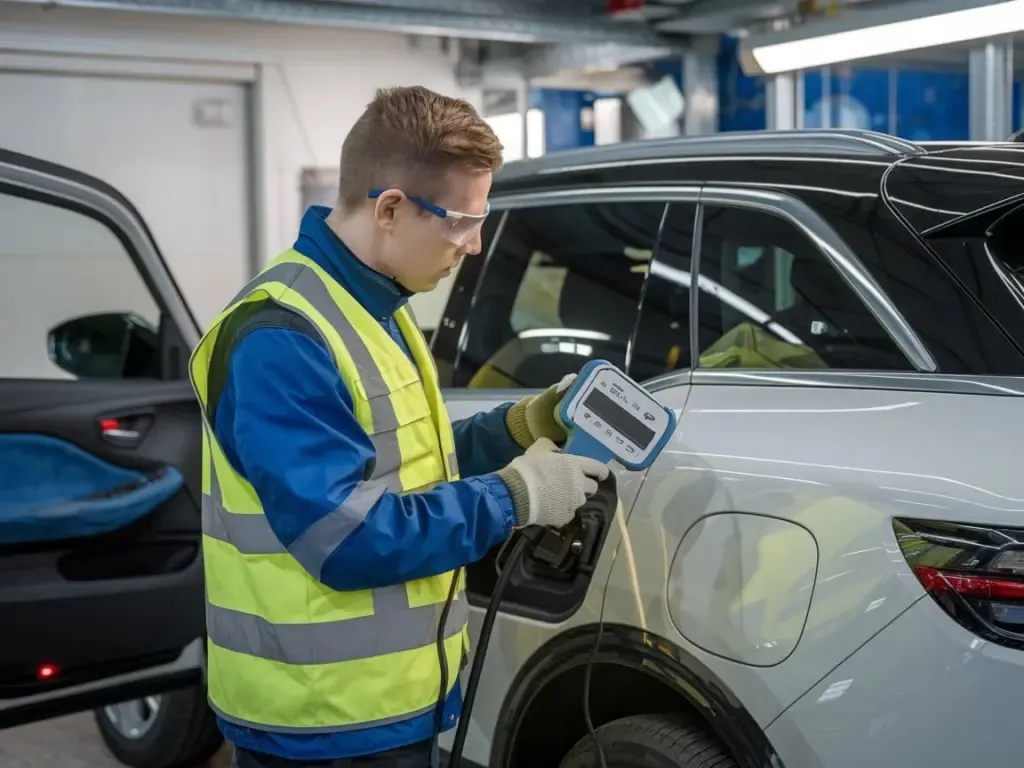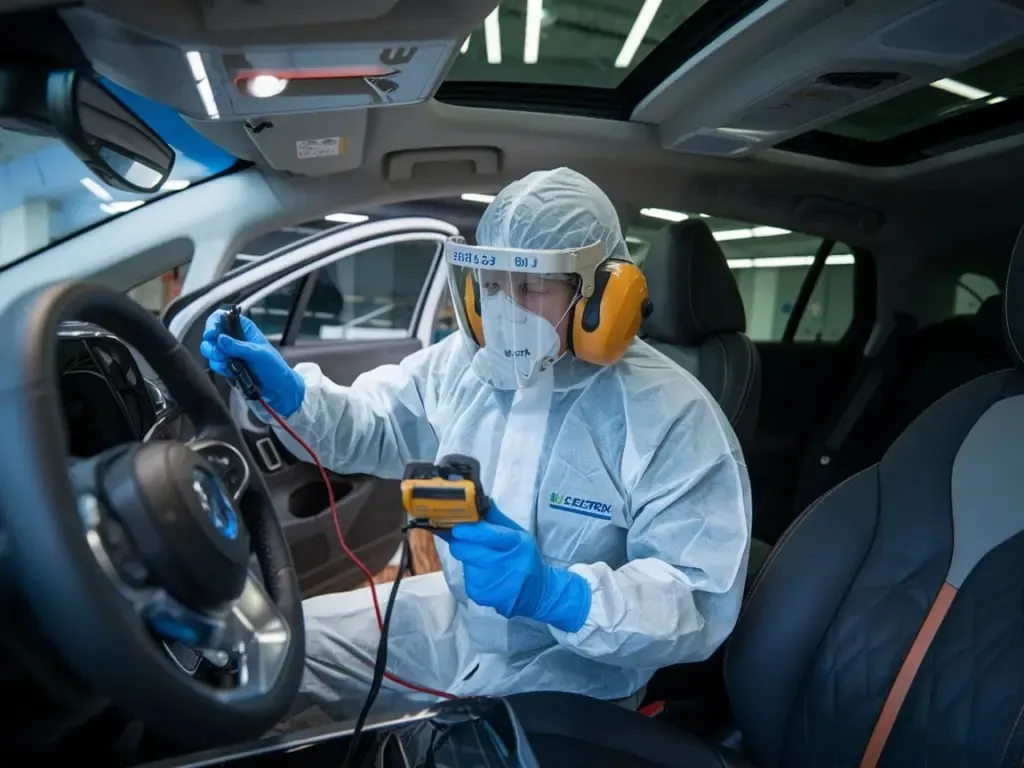What Do the Updated Standards IEC 62764 and IEC 62226 Say about Measuring Magnetic Fields in Cars?

Electric and hybrid vehicles offer a sustainable path forward to reduce our reliance on fossil fuels. However, their increasing adoption raises an important question: are the magnetic fields generated by these systems within safe exposure levels for passengers?
To address this concern, European standardization bodies have introduced two primary guidelines, IEC 62764 and IEC 62226, which are focused on the consistent measurement and evaluation of magnetic fields in automotive environments. These standards are designed to check that exposure assessments are accurate, repeatable, and compatible with international health and safety recommendations.
Let’s discuss their relevance and scope.
Why Are Standards for Measuring Magnetic Fields Necessary?
 Without standardized procedures, assessing magnetic field exposure becomes inconsistent. Different instruments, positioning, or conditions may produce results that vary widely—even within the same vehicle model. This variability hinders both regulatory compliance and meaningful comparisons between car designs.
Without standardized procedures, assessing magnetic field exposure becomes inconsistent. Different instruments, positioning, or conditions may produce results that vary widely—even within the same vehicle model. This variability hinders both regulatory compliance and meaningful comparisons between car designs.
The introduction of IEC 62764 and IEC 62226 creates a framework to:
- Define how and where magnetic fields in vehicles should be measured.
- Provide uniformity in test methods for health and safety assessments.
- Allow benchmarking across vehicle types and configurations.
For automakers and researchers, this means they can:
- Determine the actual magnetic field levels experienced by vehicle occupants.
- Compare findings across different vehicle platforms.
- Identify design improvements to reduce exposure and improve passenger safety.
A Closer Look at the Standards
IEC 62764: Measurement of Magnetic Fields in Passenger Areas
This standard is dedicated specifically to the automotive context, primarily electric and hybrid vehicles.
- Measurement Zones: It identifies precise locations within the vehicle for field strength measurements, typically including driver and rear passenger seating positions. These are regions of direct human exposure.
- Measurement Conditions: The standard requires that testing occurs under typical operational conditions (driving, idling, acceleration) using calibrated instruments. The goal is to reflect real-world use rather than idealized lab conditions.
- Rationale: This mirrors noise testing protocols. Just as sound level measurements are taken from a listener’s position rather than beside a speaker, IEC 62764 verifies that magnetic field data is collected where passengers actually sit. This increases both the relevance and reliability of the results.
IEC 62226: Human Exposure Assessment Framework
 Unlike IEC 62764, which is vehicle-specific, IEC 62226 is a broader standard designed to assess the interaction between low-frequency electromagnetic fields and the human body across all environments: vehicles, buildings, power systems, and more.
Unlike IEC 62764, which is vehicle-specific, IEC 62226 is a broader standard designed to assess the interaction between low-frequency electromagnetic fields and the human body across all environments: vehicles, buildings, power systems, and more.
In the automotive context, it plays three roles:
- Exposure Modeling: The standard outlines how to simulate the human body’s interaction with measured magnetic fields, allowing for realistic estimation of internal exposure.
- Health Compliance: It is in line with international exposure limits (e.g., ICNIRP), so that vehicles remain within established biological safety thresholds.
- Scenario Coverage: Whether the vehicle is stationary, accelerating, braking, or charging, IEC 62226 offers guidance on how to handle variations in field distribution and exposure duration.
Think of it as a transfer function: it translates the external field strength (measured via IEC 62764) into an internal exposure estimate, based on human anatomical models.
Context and Importance
Multiple studies suggest that prolonged exposure to certain levels may carry health risks. Since electric and hybrid vehicles are now part of everyday transportation and will remain so, the focus must change to minimizing exposure without giving up the benefits these cars provide.
The standards IEC 62764 and IEC 62226 provide a structured framework that allows manufacturers and testing organizations to consistently assess and compare electromagnetic field (EMF) exposure levels inside vehicles. These standards are a necessary step toward making sure that vehicle design takes occupant safety into account in relation to EMF.

